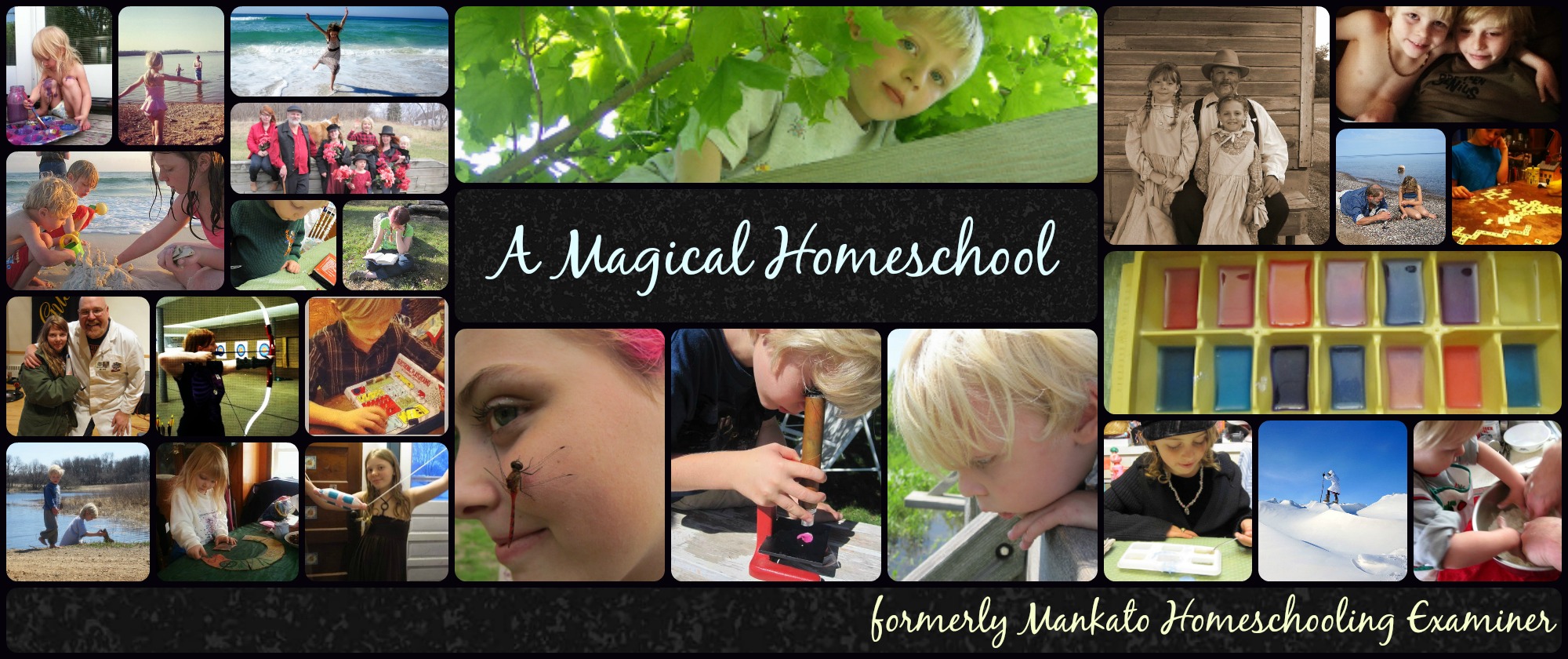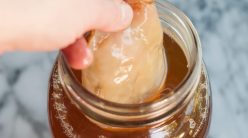We checked out a fabulous book from the library yesterday and it got our youngest daughter, Fiona, excited about finding and identifying feathers.
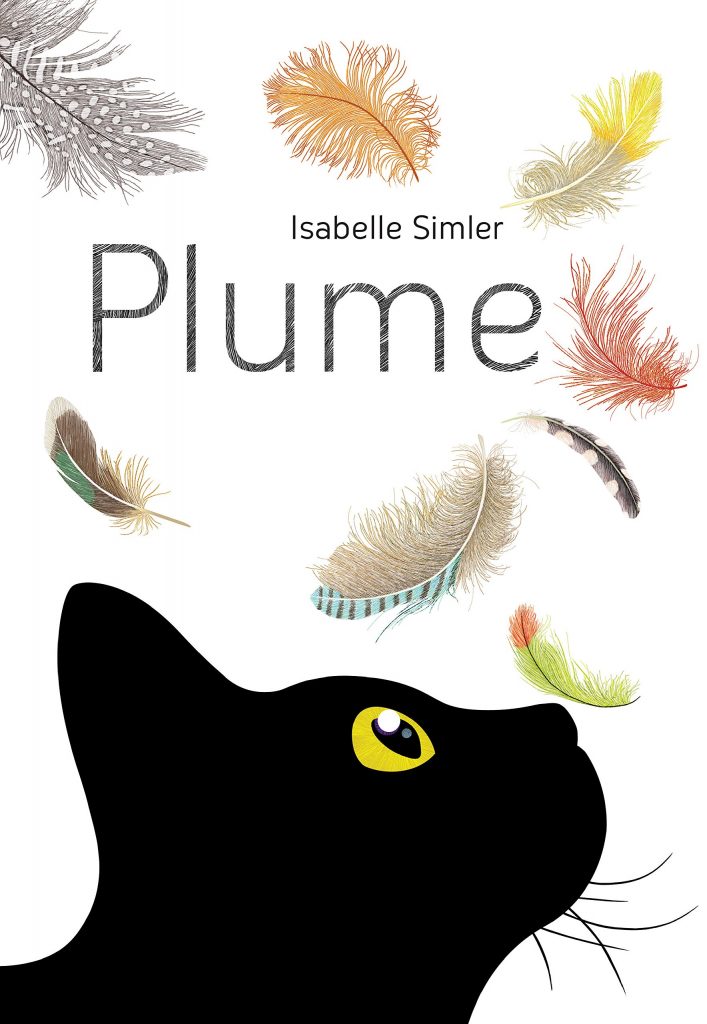
Plume, written and illustrated by Isabelle Simler, was New York Times selection for Best Illustrated Children’s Books of 2017 and you’ll be able to see why. I just find it enchanting and simple, and Fiona is in love with it, too.
The book contains large pages of beautiful illustrations of birds and their feathers, along with occasional glimpses of their biggest fan, this black cat (no worries, he just likes the feathers for his overstuffed feather bed).
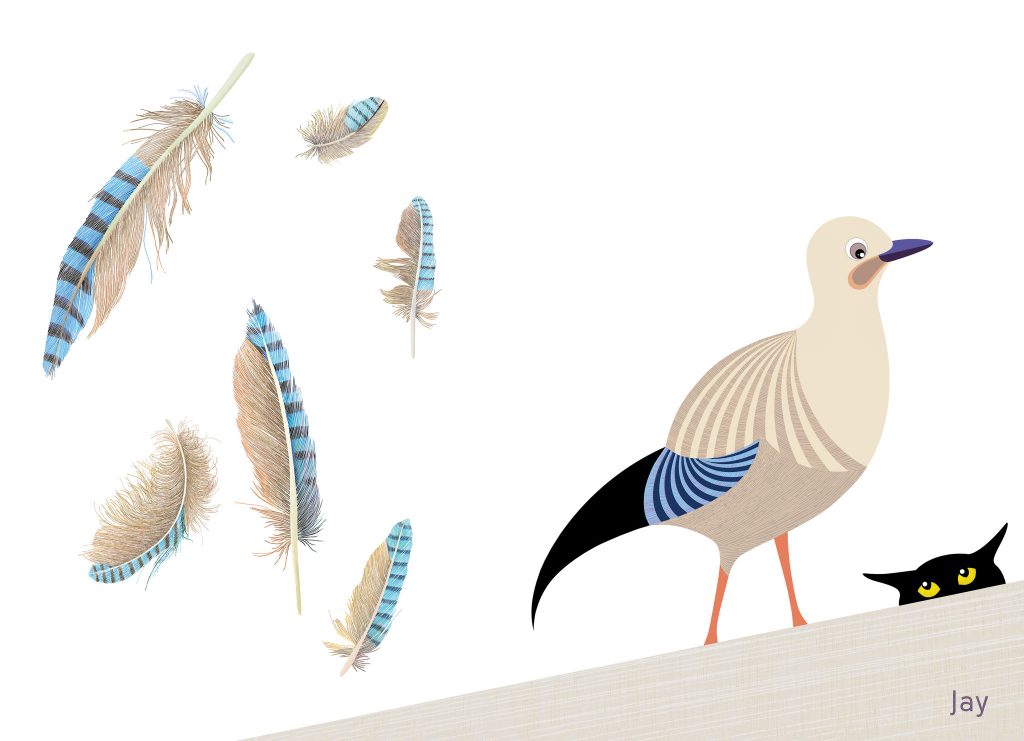
Ever since we got it, Fiona has been carrying it around, showing me her favorite feathers in the book, and trying to match up feathers that she’s spotted in our yard to the birds inside the book.
Plume has some common birds and their feathers, such as chickens, geese and jays, but it also contains images of some of the prettiest birds and feathers that are not likely to be found in our back yard, such as peacocks, swans and ibises.
I’ve already ordered a copy of the book for our house since I love it so much, but she was trying to identify a white and tan feather in the back yard today and I went looking for more comprehensive tools to help with feather ID.
Luckily, there are some great ones.
The U.S. Fish and Wildlife Service has a fantastic Feather Atlas where you can search by bird or try to identify unknown feathers.
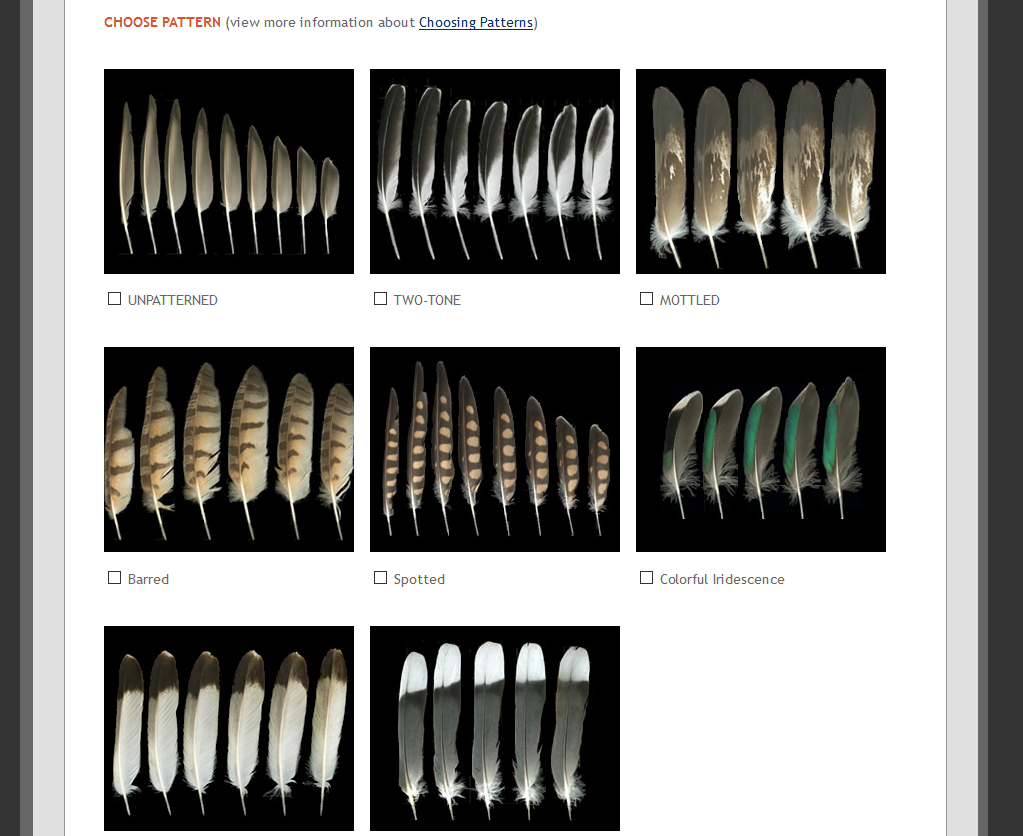
The tool narrows down feathers by pattern and then by color, and shows you all possible matches.
For instance, here are the results for spotted black and white feathers.

Feather Atlas also has lots of good information on parts of feathers, their uses and more.
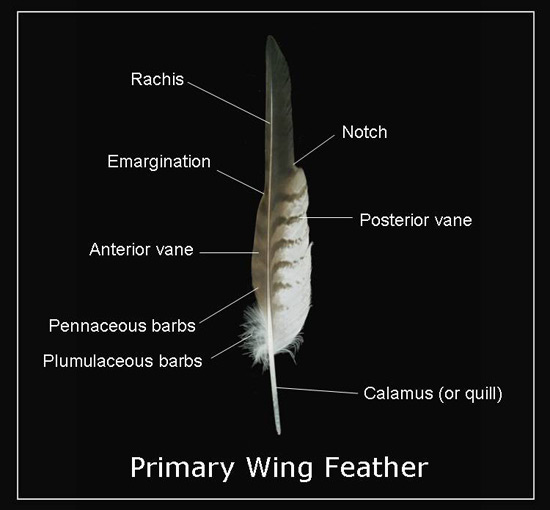
Other helpful sites can help you and your kids learn more about feathers you see in nature and just appreciate their beauty.

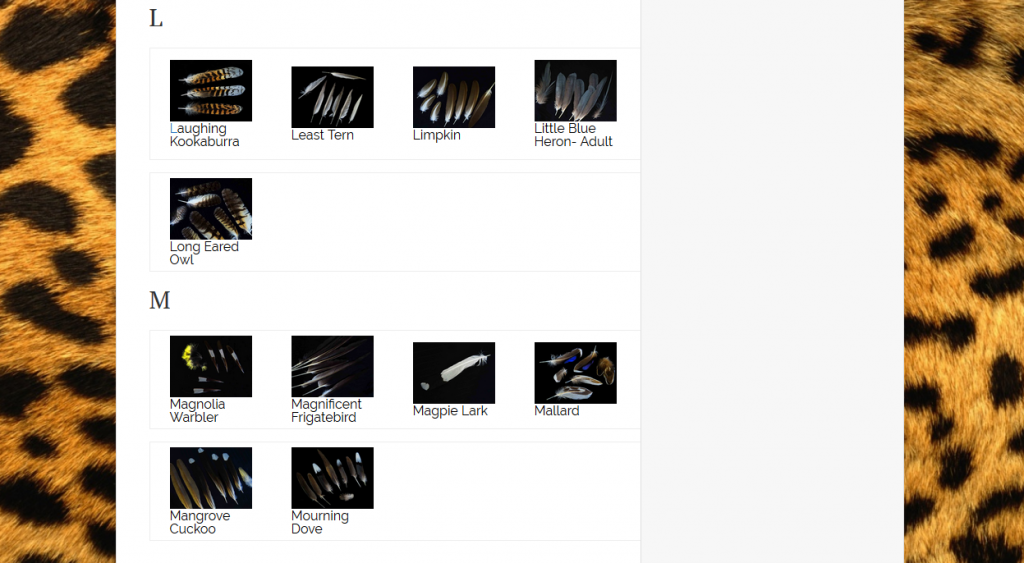
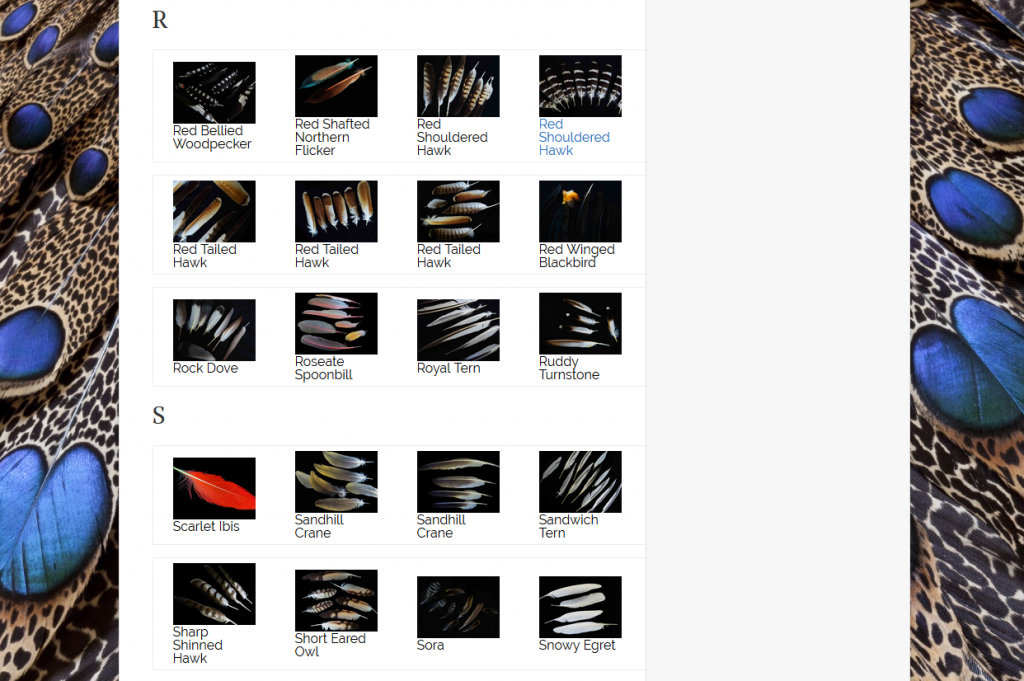
Not all birds are included, but it’s a gorgeous round-up of images.
Featherbase is a relatively new feather identification site from Germany that is now available in English.

If you’re interested in identifying raptor feathers in particular, this PDF excerpt from Raptors: a field guide for surveys and monitoring has extensive photos and ID information for feathers.
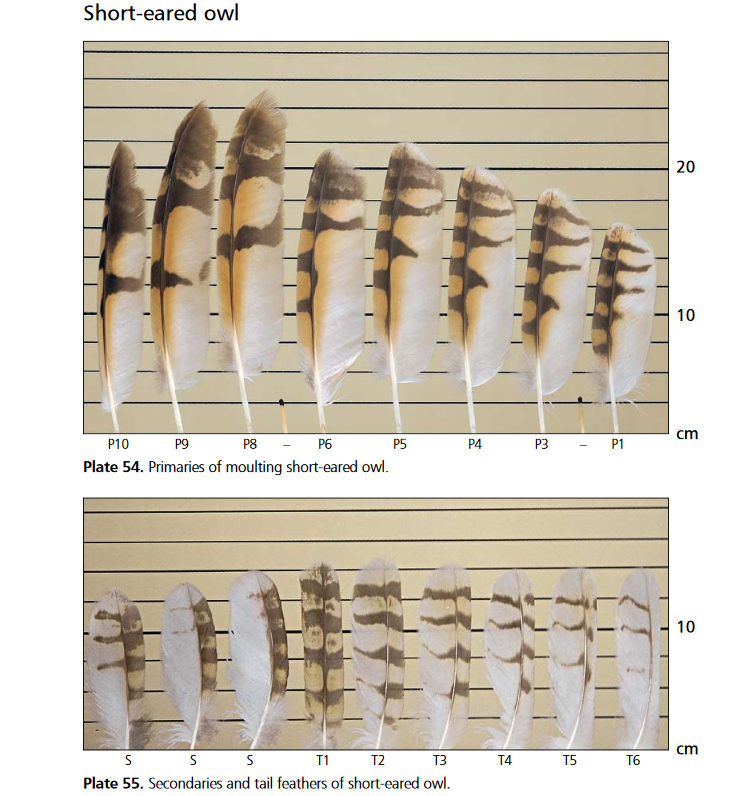
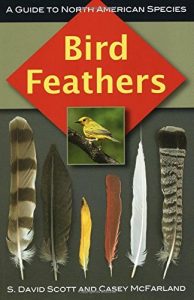
For ID books, Bird Feathers: A Guide to North American Species is a fantastic resource.
It contains:
- Over 400 photos of representative feathers from 379 species
- How to identify not only what bird a feather came from but also what kind of feather it is
- Range maps and wing type given for each bird
Kids seem to naturally love nature ID books and this is a great addition for your homeschool library. (Other favorite ID books here in our homeschool are for rocks, wildflowers, wild edible foods in our region, trees, birds, animal tracks and insects.)
If you’re looking for a book showing lots of different feathers but not necessarily a complete ID guide, Feathers: A Beautiful Look at a Bird’s Most Unique Feature looks like a great choice.

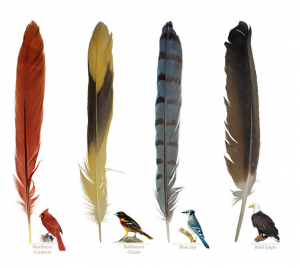
We don’t have this one, but it sounds like a good one to check out. The publisher writes:
This coffee-table book is filled with more than 230 stunning, one-of-a-kind pictures by award-winning photographer Stan Tekiela, and it promises to delight as it walks you through the world of feathers. How do feathers keep tiny chickadees warm in winter? Why aren’t Blue Jays actually blue? How do the feathers of owls help them hunt? Featuring birds from across the United States, Feathers will season your understanding and enhance your enjoyment of birds.
And one of my favorite children’s books about feathers is Feathers: Not Just for Flying, which teaches children about all of the uses feathers have for birds with lovely watercolor pictures in a scrapbook type of format.
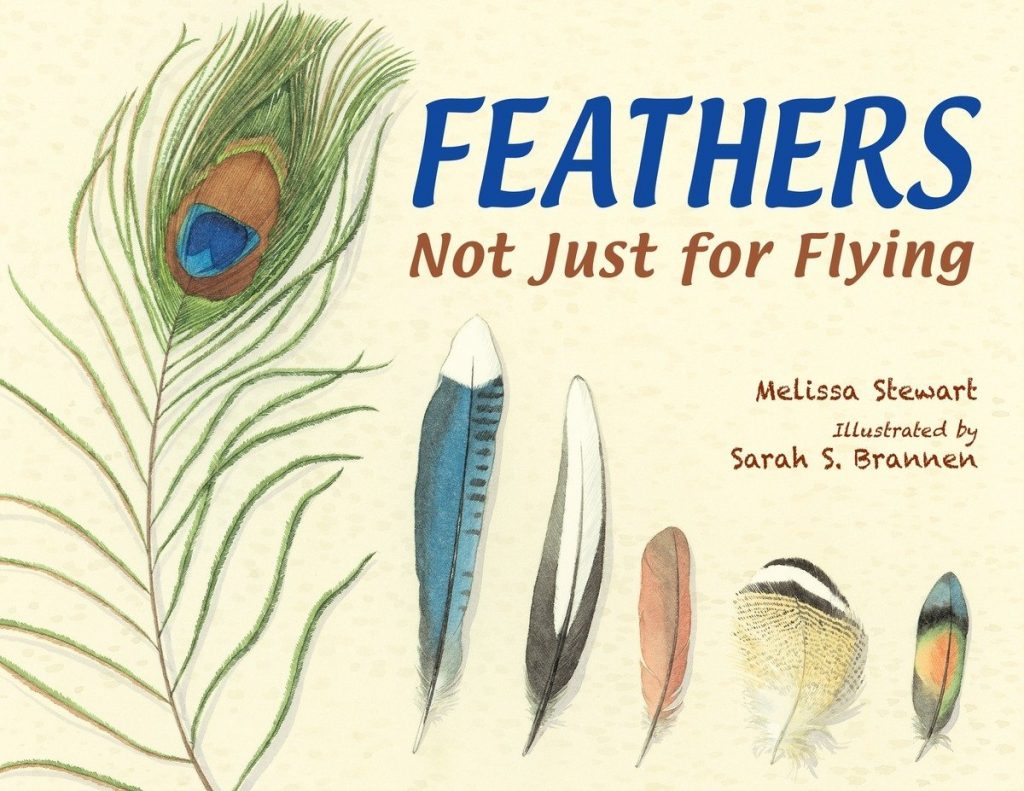
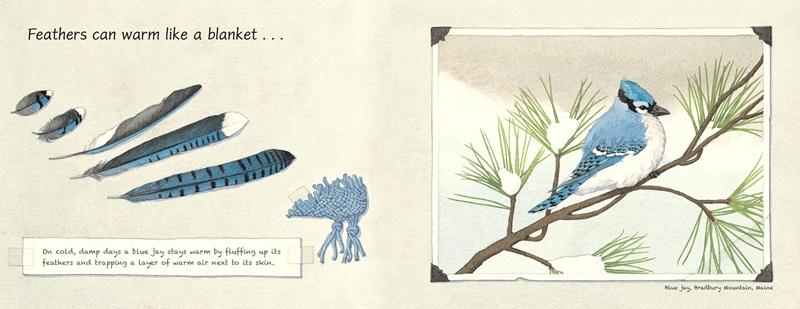
No matter what, be sure to note this legal information from the U.S. Fish and Wildlife Service regarding possessing feathers though:
Feathers are beautiful and remarkable objects. If you find feathers in nature, appreciate, study, and photograph them, but leave them where you found them. It is illegal to take them home.
The possession of feathers and other parts of native North American birds without a permit is prohibited by the Migratory Bird Treaty Act (MBTA). This protects wild birds by preventing their killing by collectors and the commercial trade in their feathers, and extends to all feathers, regardless of how they were obtained. There is no exemption for molted feathers or those taken from road- or window-killed birds. More information on the Migratory Bird Treaty Act, and the list of MBTA-protected species can be found at: http://www.fws.gov/migratorybirds/regulationspolicies/mbta/mbtintro.html.
Exceptions do exist for the feathers of legally-hunted waterfowl or other migratory gamebirds, and for the use of feathers by Native Americans. For more information, see the FAQ page (http://www.fws.gov/lab/featheratlas/faq.php).
Individuals or institutions wishing to use bird feathers, bones, or whole specimens for educational or research purposes must apply for permits from the U.S. Fish and Wildlife Service and their state wildlife or natural resource agency. See: http://www.fws.gov/migratorybirds/mbpermits.html.
Wikipedia has a good article about plume hunting and how feather collecting for women’s hats nearly wiped out many bird species.
Nature journals, sketches and photographs are a great way to “collect” bird feathers while leaving them where we find them. 🙂
If you know of any other great feather resources, please add them in the comments!
** Note: This page contains Amazon affiliate links. Purchases made through our links earn us a small commission at no cost to you.
